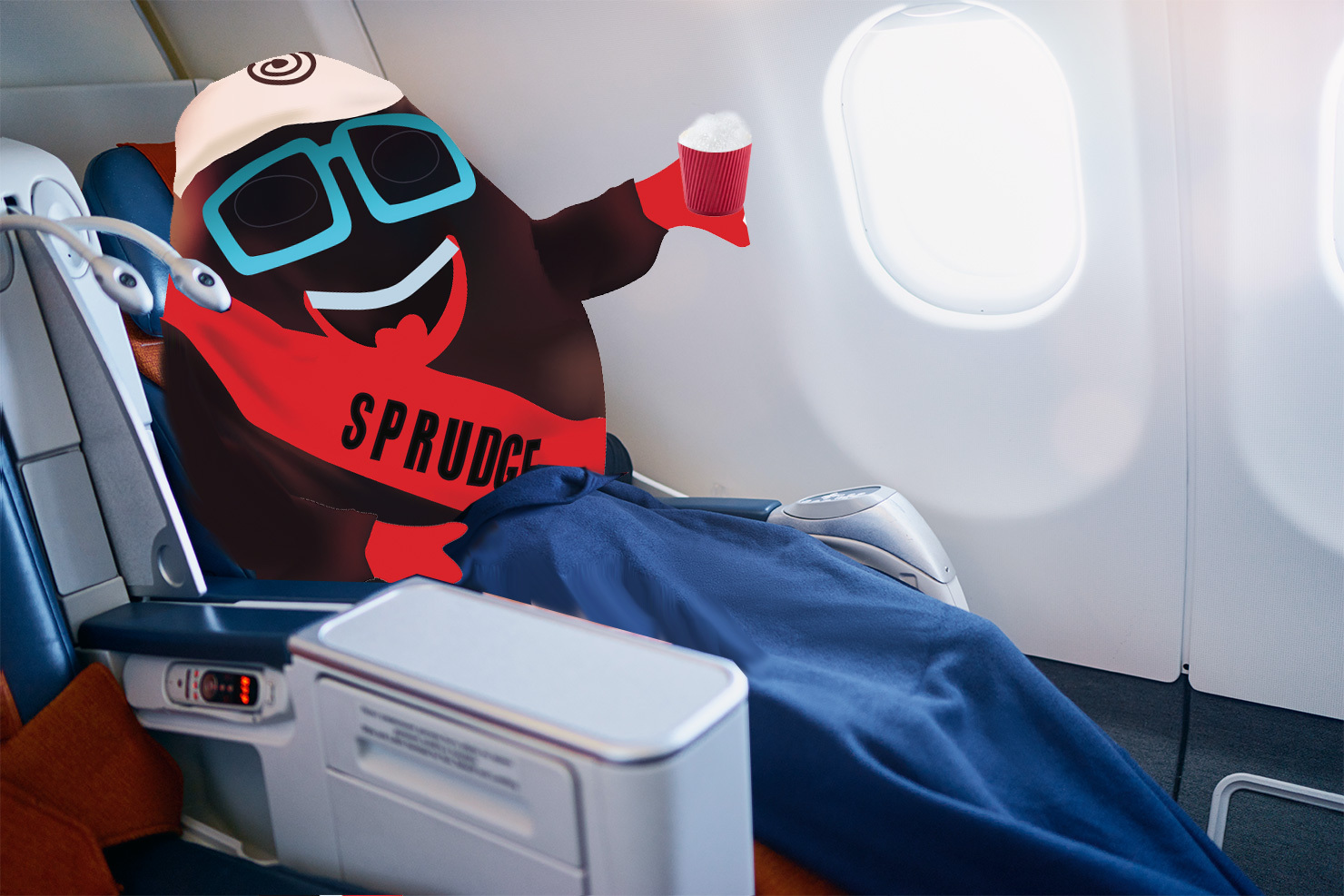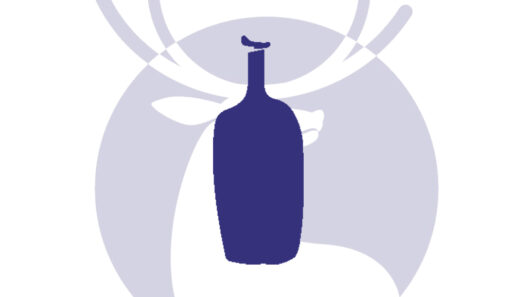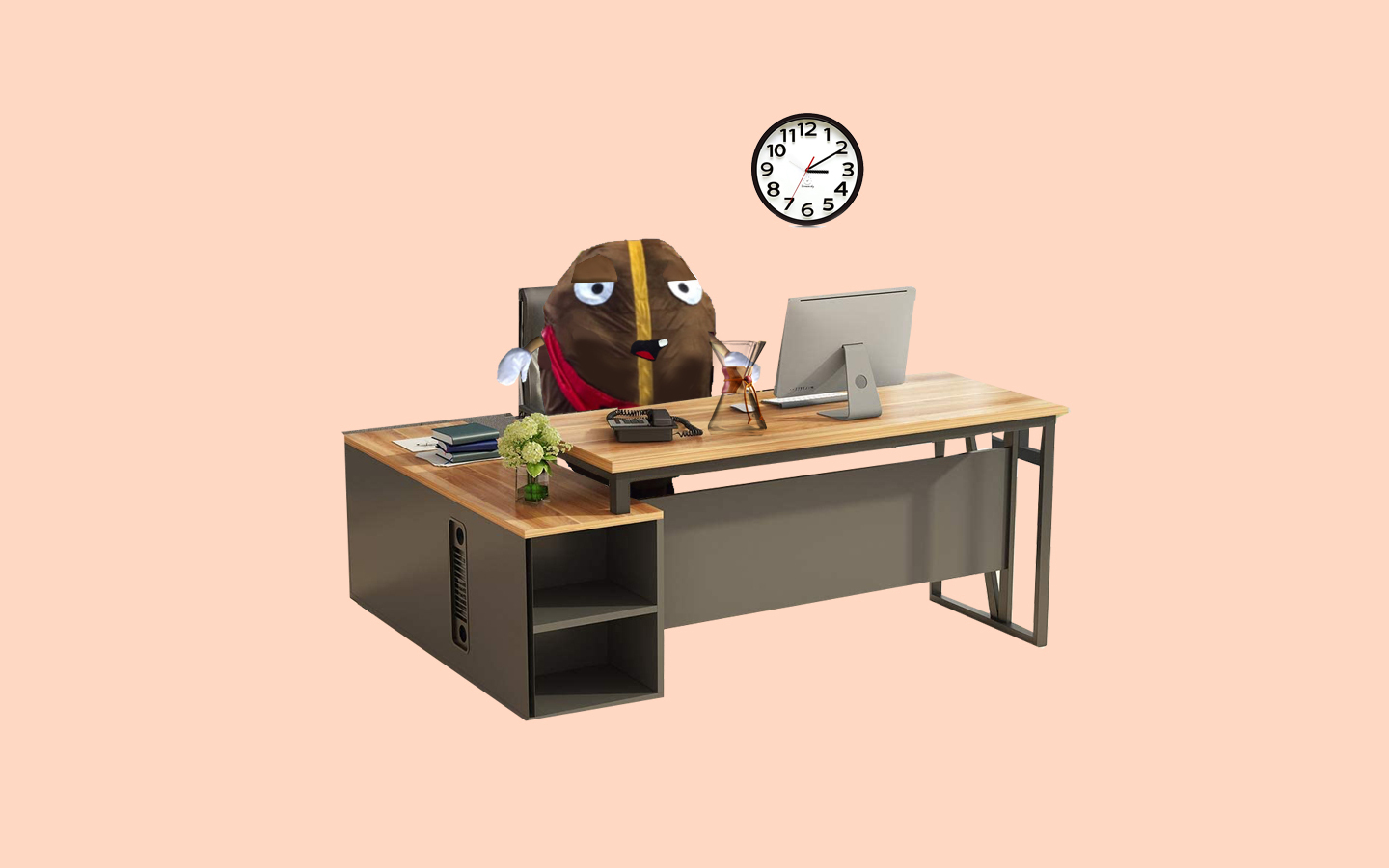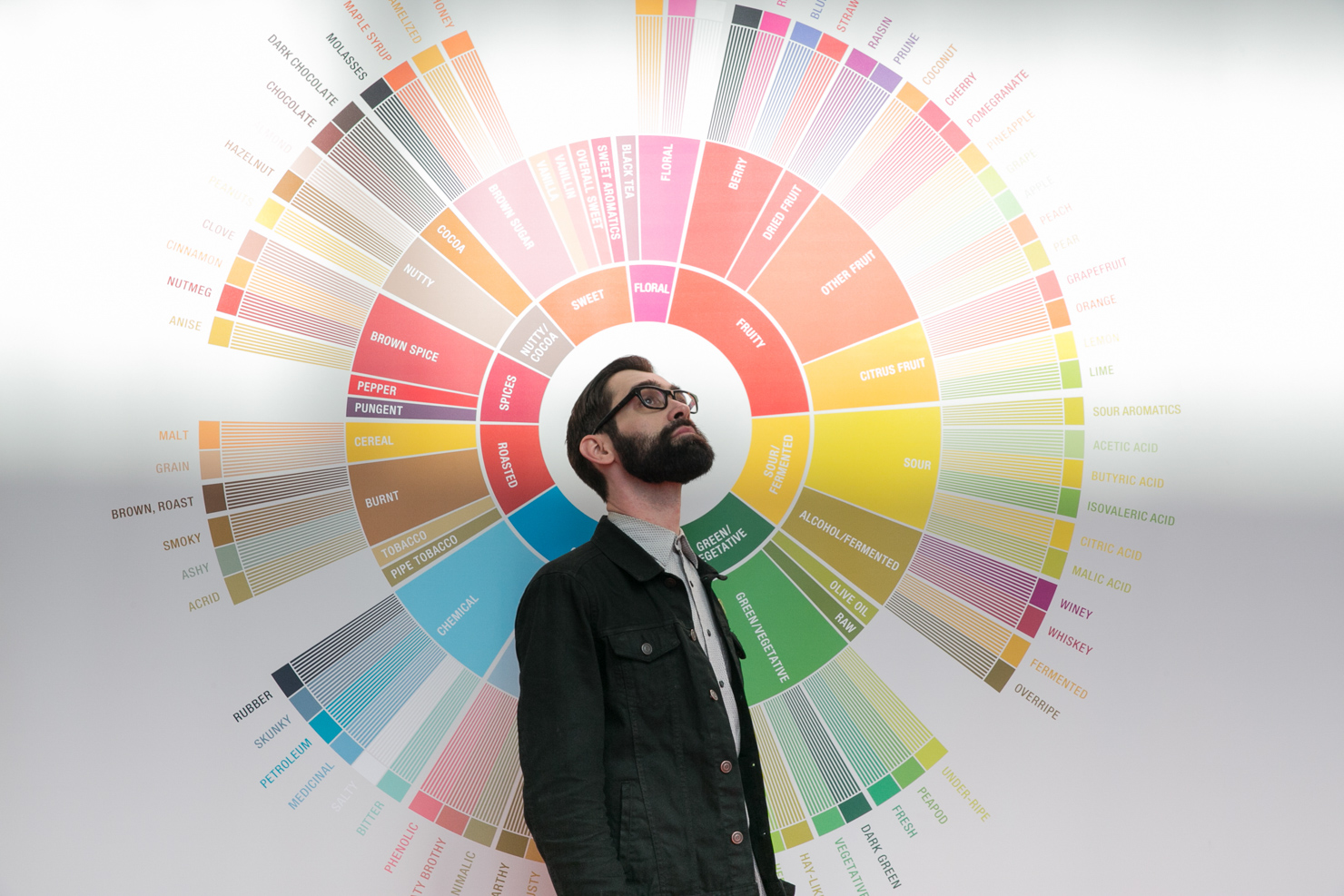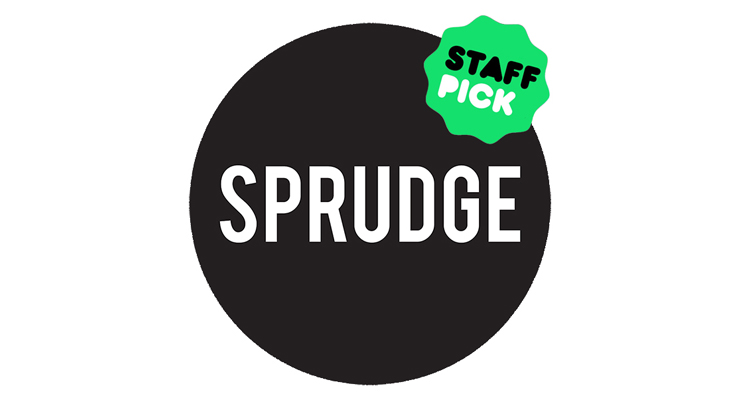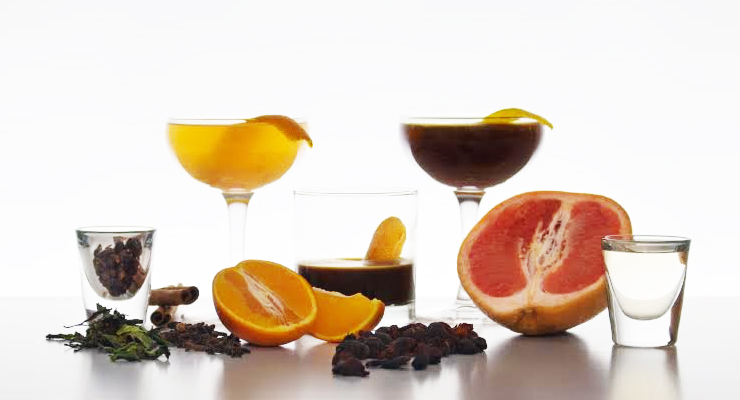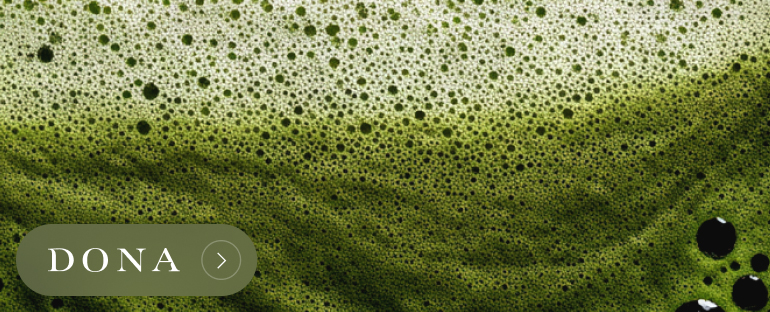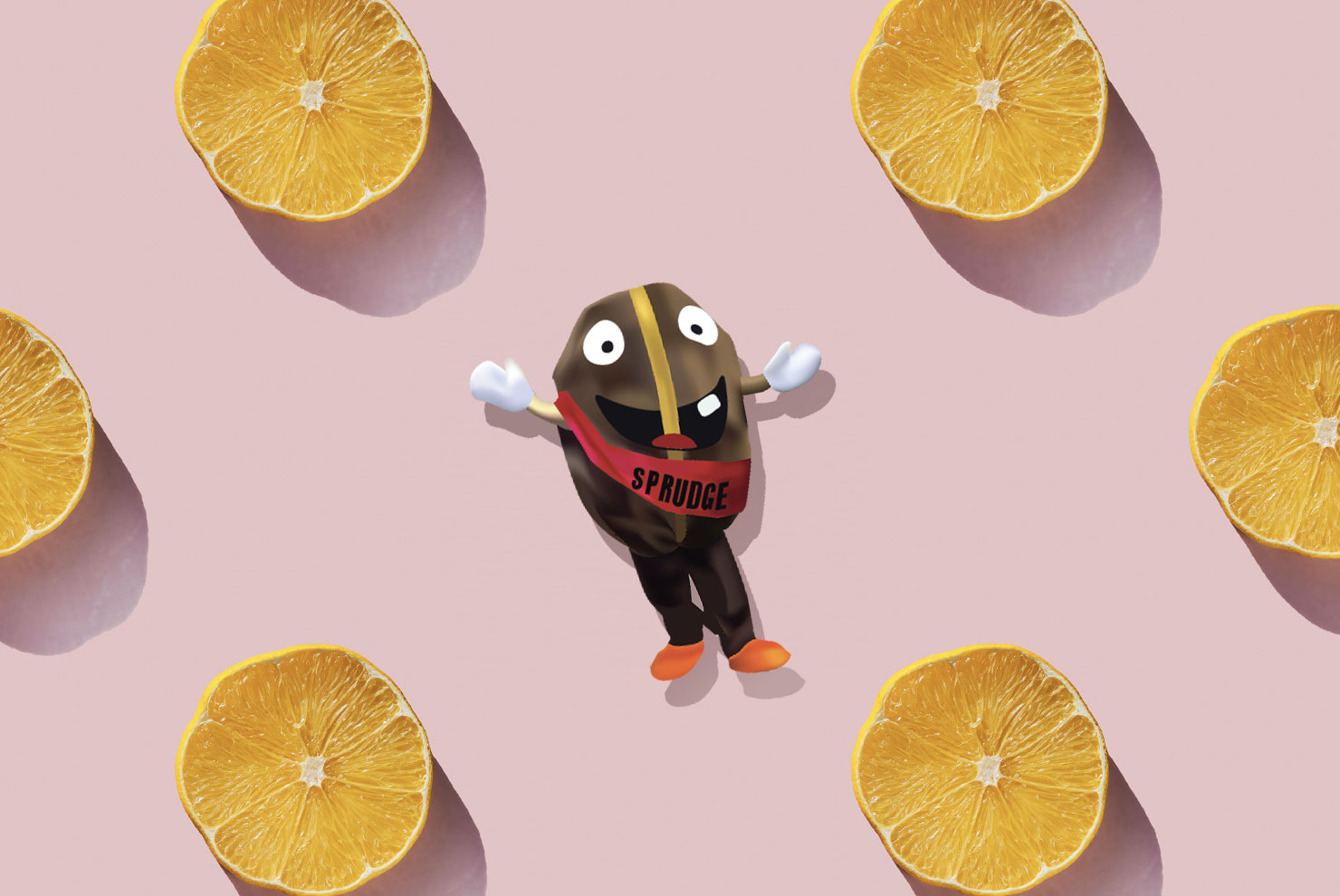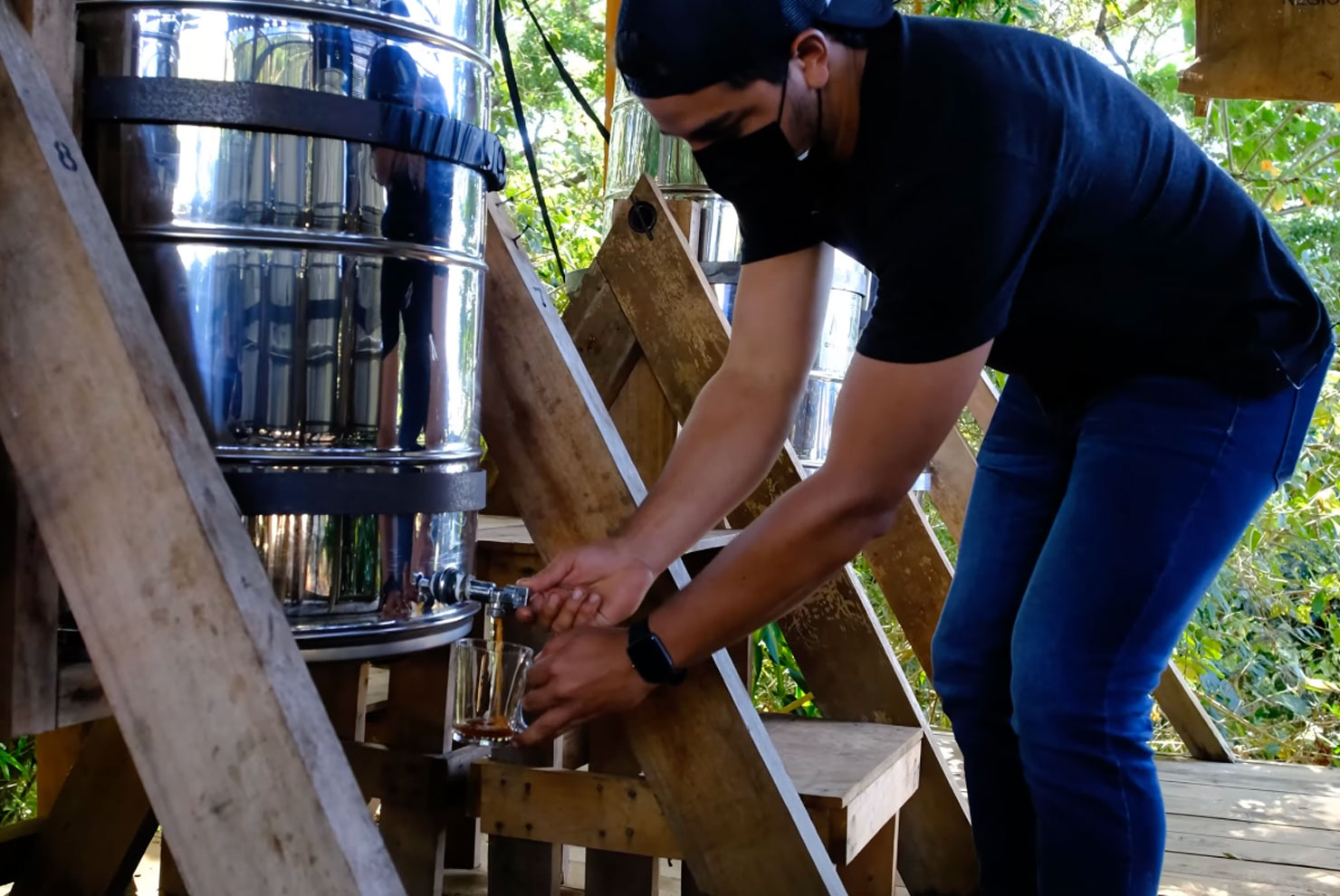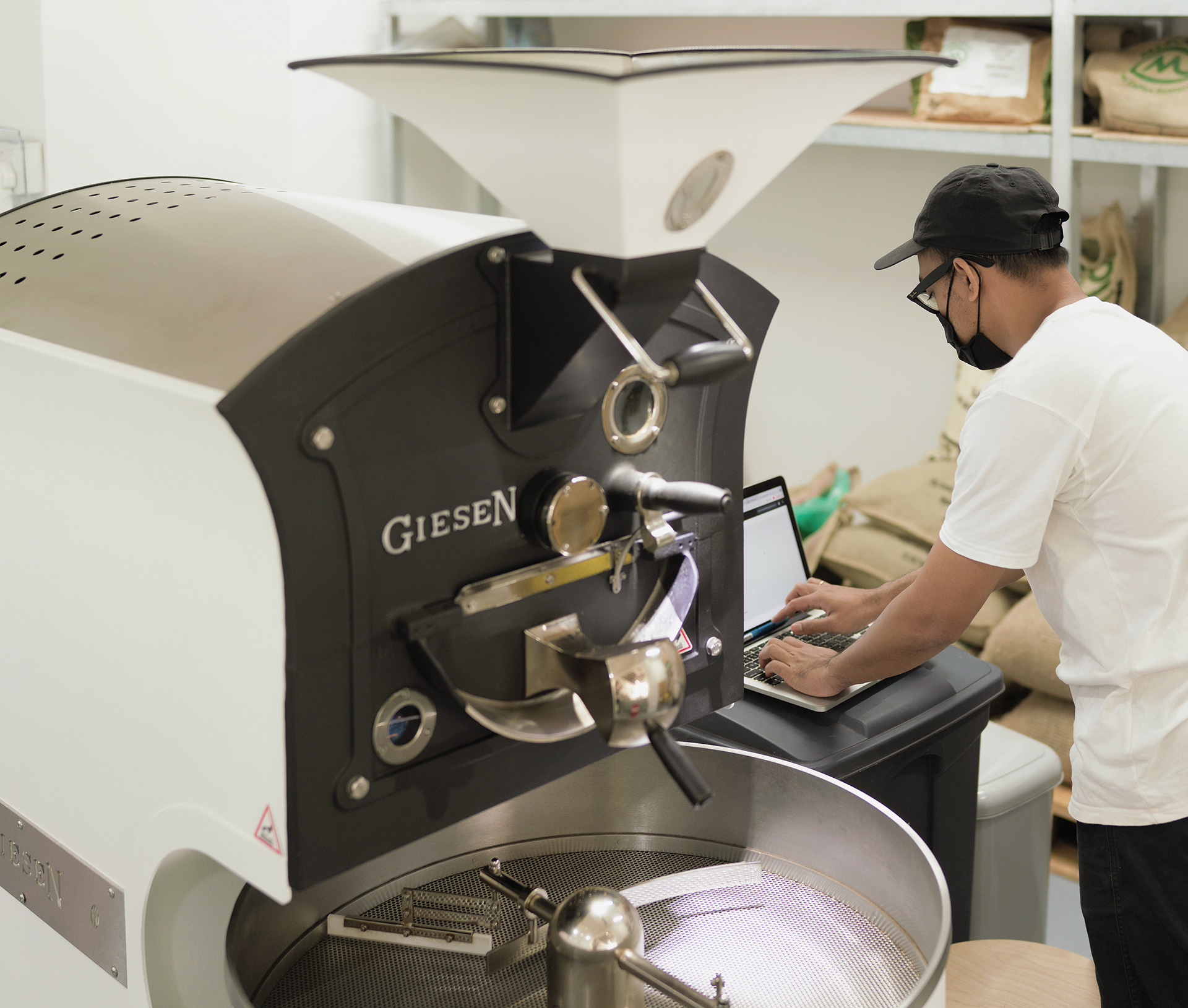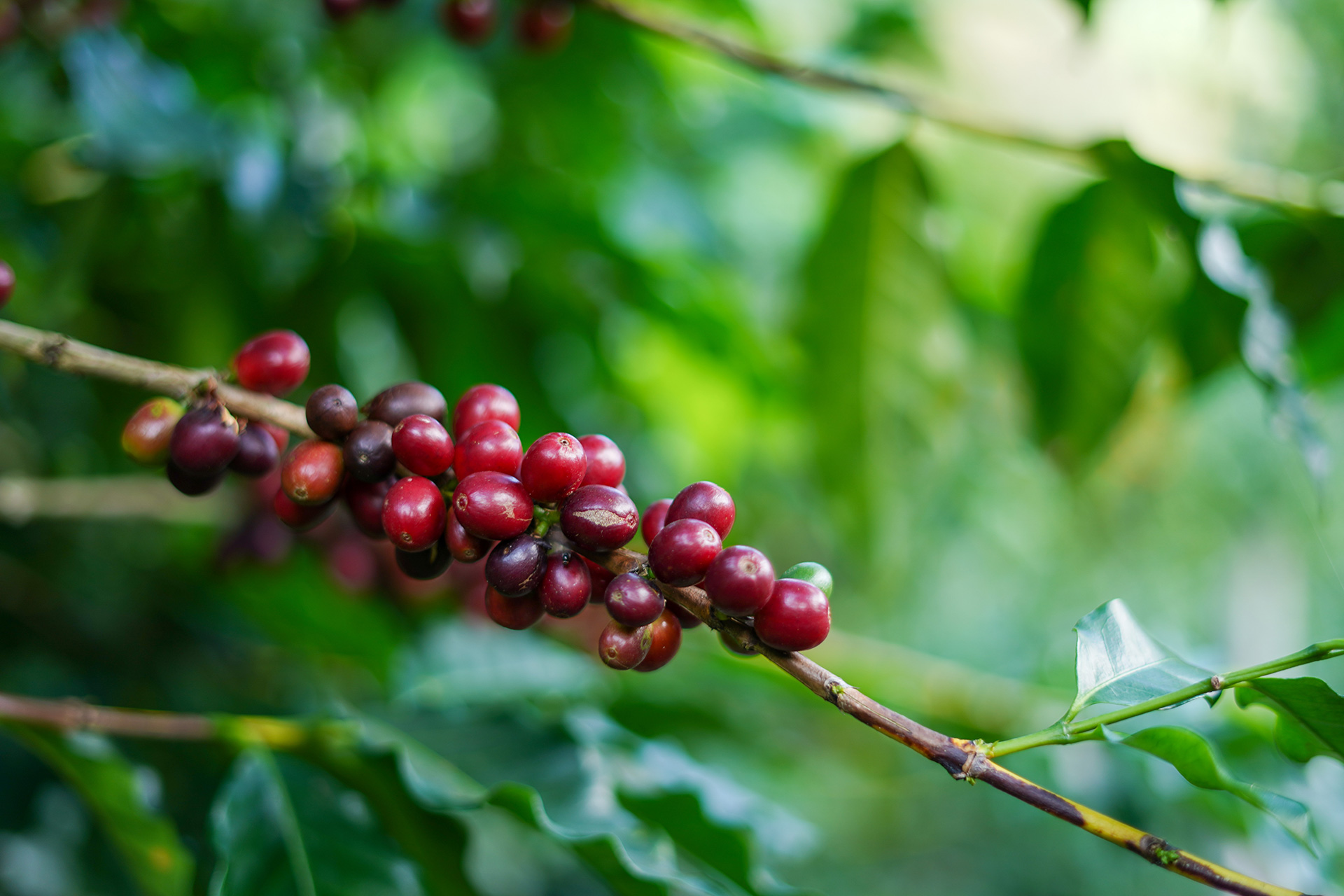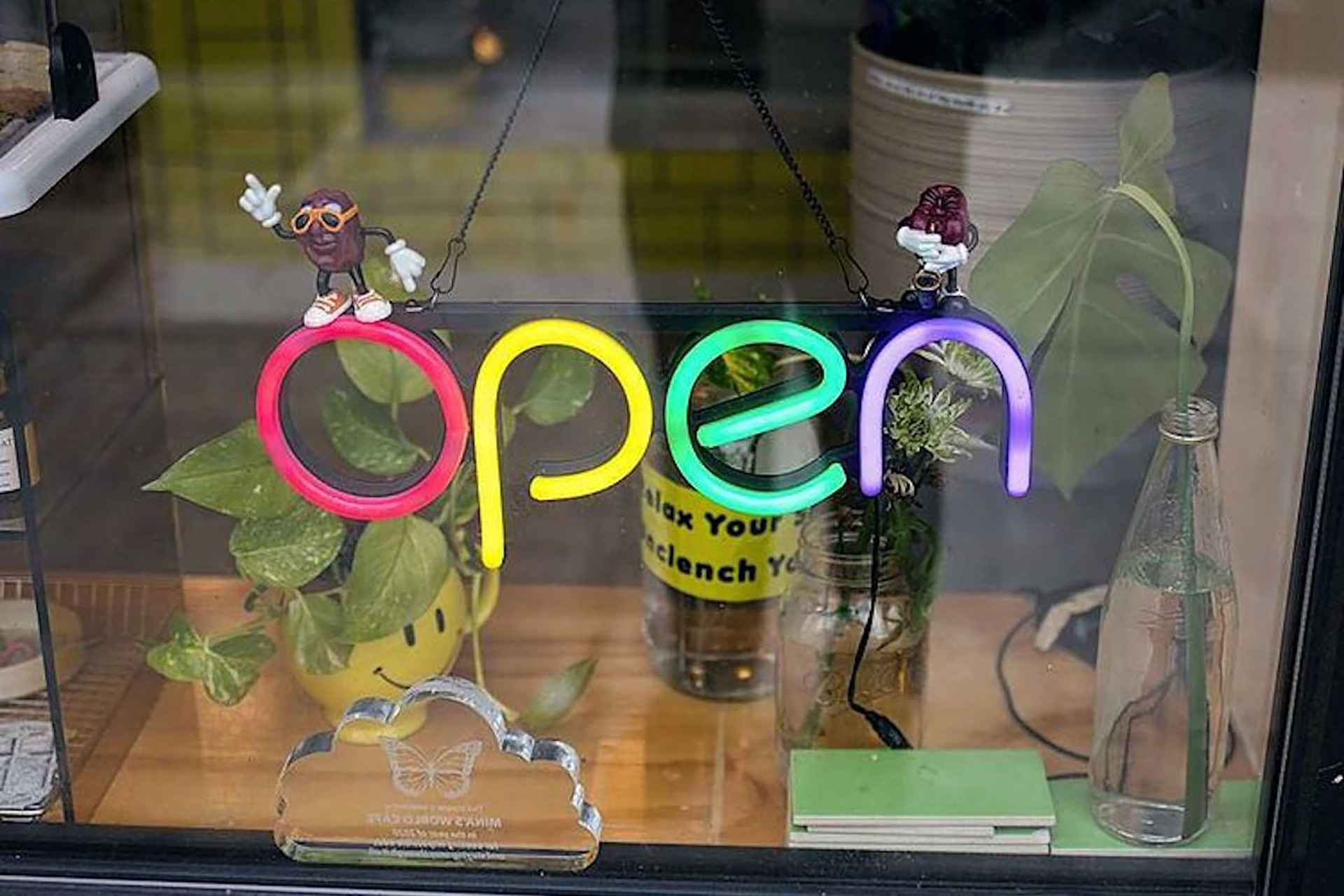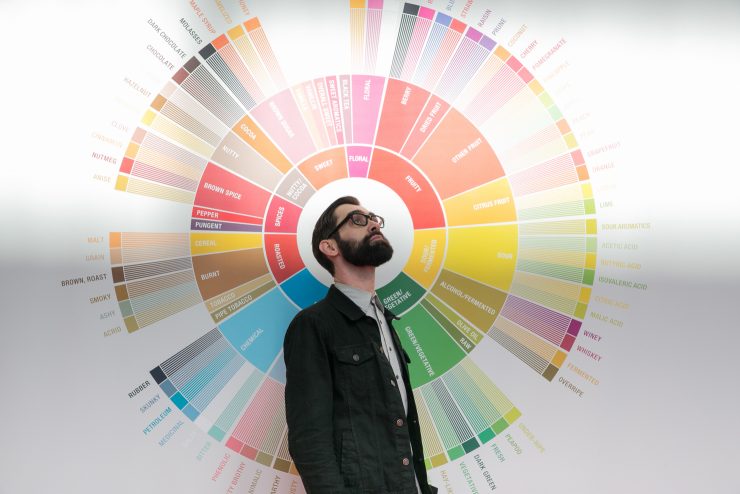
Four Barrel Coffee describes their Rwanda Simbi as “an old white Mustang convertible covered in bumper stickers with tangerine and nectarine peels under the passenger seat.” Unless every other roaster asks what Four Barrel is smoking and loads a bowl of it, there’s no way to speak the same language.
That’s where the Specialty Coffee Association of America’s Flavor Wheel comes in. Originally developed in rudimentary form in 1995, the SCAA released a new version at the beginning of the year that updates and codifies a lexicon of coffee flavors to help turn the subjective poetry of coffee descriptors into objectively agreeable prose.
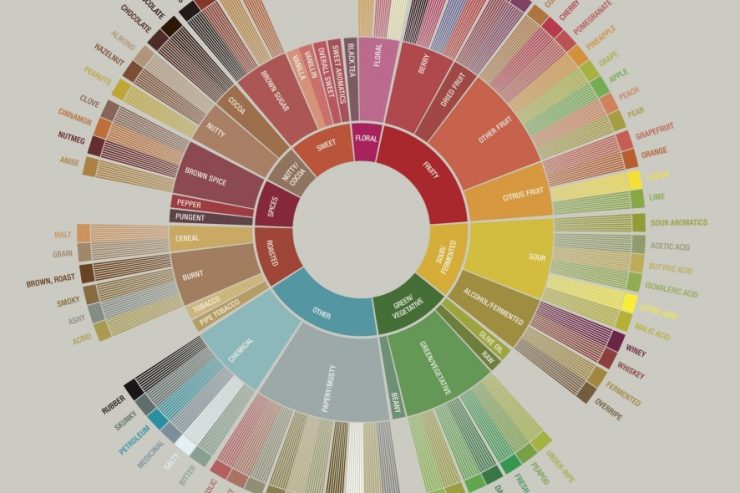
At this year’s SCAA Event, the association’s coffee science manager Emma Sage and World Coffee Research’s Hanna Neuschwander gave a deep dive into the science behind the new wheel. The end goal of the project is to be able to understand quality in an entirely different way than the cupping process, one that is quantifiable and beyond the palate discrepancies faced by even the most calibrated cuppers.
Despite the intense training that goes into cupping certification, an initial round of testing showed that a panel of sensory specialists actually out-tasted a panel of certified cuppers. Tasting a set of 13 Colombian coffees, the cuppers came up with 59 flavor terms, with only four terms universal to more than one cupper. The sensory panel arrived at 92 terms and were in 100% agreement. It proved that however valuable the cupping process, it doesn’t pass scientific muster.
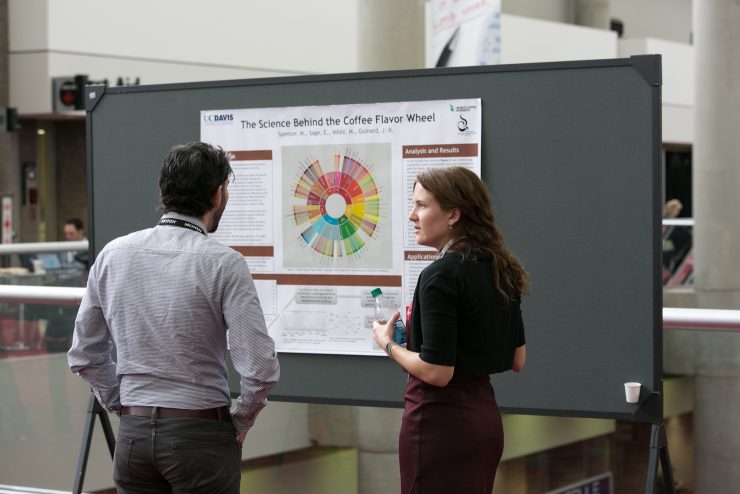
That set the groundwork for starting the real experiment. At Kansas State University, a panel of five trained sensory scientists spent 150 hours analyzing 105 coffee samples from 14 countries. In order to dodge the pitfalls of overly esoteric tasting notes, flavors were paired to specific reference points. For instance, “blackberry” wasn’t to be associated with berries plucked from the Argentinean hillside and eaten as an appetizer to a steak dinner paired with a reasonably priced Malbec, but rather Smuckers blackberry jam. The specific reference was kept on-hand such that tasters were able to gauge and quantify the comparative intensity of each flavor. They settled on 99 terms, which were confirmed by a second team of sensory scientists.
In order to find how these 99 terms could be oriented around a wheel, the SCAA and the University of California, Davis enlisted both sensory scientists and industry experts to cluster these terms into like groups. The result were nine overarching group terms (sweet, floral, fruity, etc.) that formed the interior of the wheel. Using a series of complicated graphs, each of these overarching groups was divided into more specific clusters that formed the second and third tiers of the wheel. To Four Barrel’s dismay, neither nectarine peels or bumper stickers made the cut.
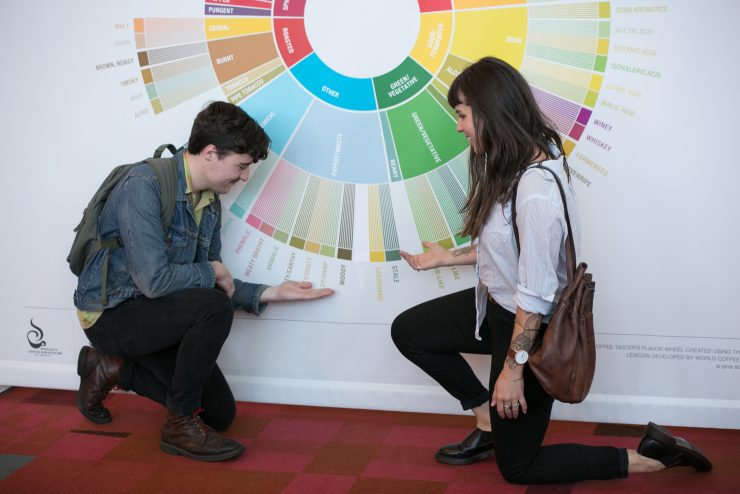
Although that seems like it uses a whole lot of science to take much of the fun out of describing coffee, the end game isn’t stifling poetic roasters. Codifying a flavor lexicon is just the first step. The goals of speaking the same language about flavor are to be able to better research coffee varieties and understand where quality comes from. It opens the doors for controlled tests to determine whether the chemistry inside certain varietals is responsible for specific flavors, or if environmental conditions have a more substantial impact.
Once the question of nature versus nurture is solved, it follows that this science could trickle down to the farm level to help farmers isolate specific flavor traits in their coffee plants, unlocking an entirely new approach to cultivating and sourcing. It has huge implications for the next few decades of the coffee industry, and before too long, roasters will actually be able to isolate the variety best suited for bringing out the subtle cracked leather aromas from the upholstery of a ’72 Mustang.
Dan Gentile is a freelance writer based in Austin, Texas. This is Dan Gentile’s first feature for Sprudge.
Photographs courtesy the Specialty Coffee Association of America.



